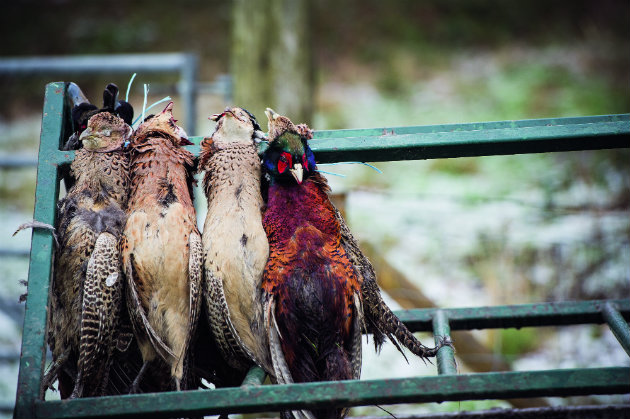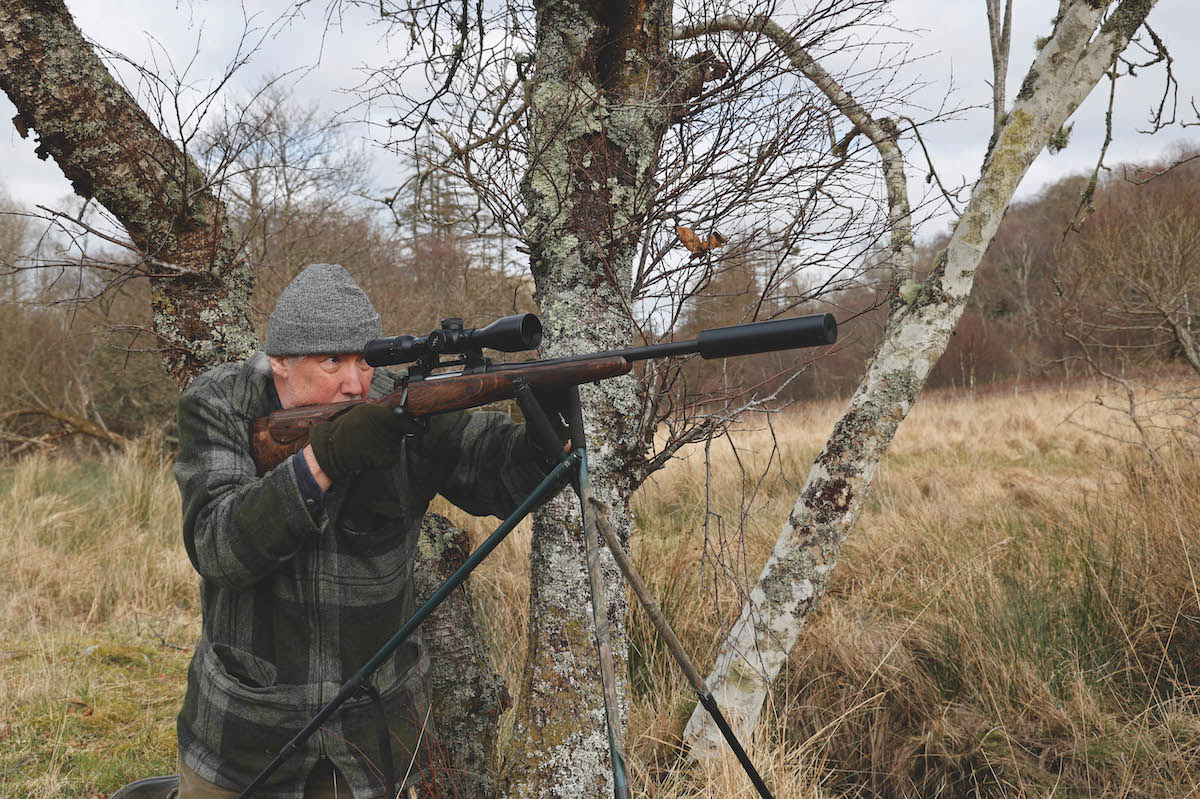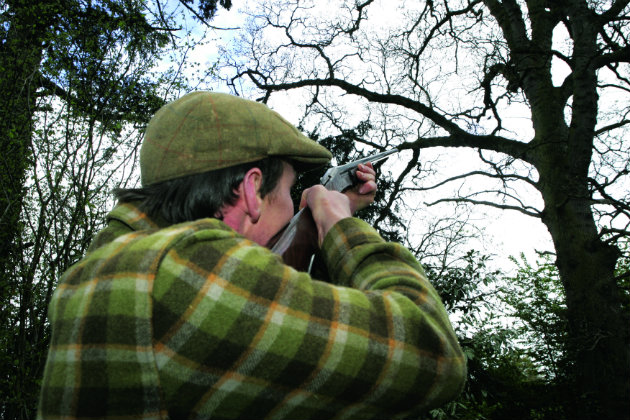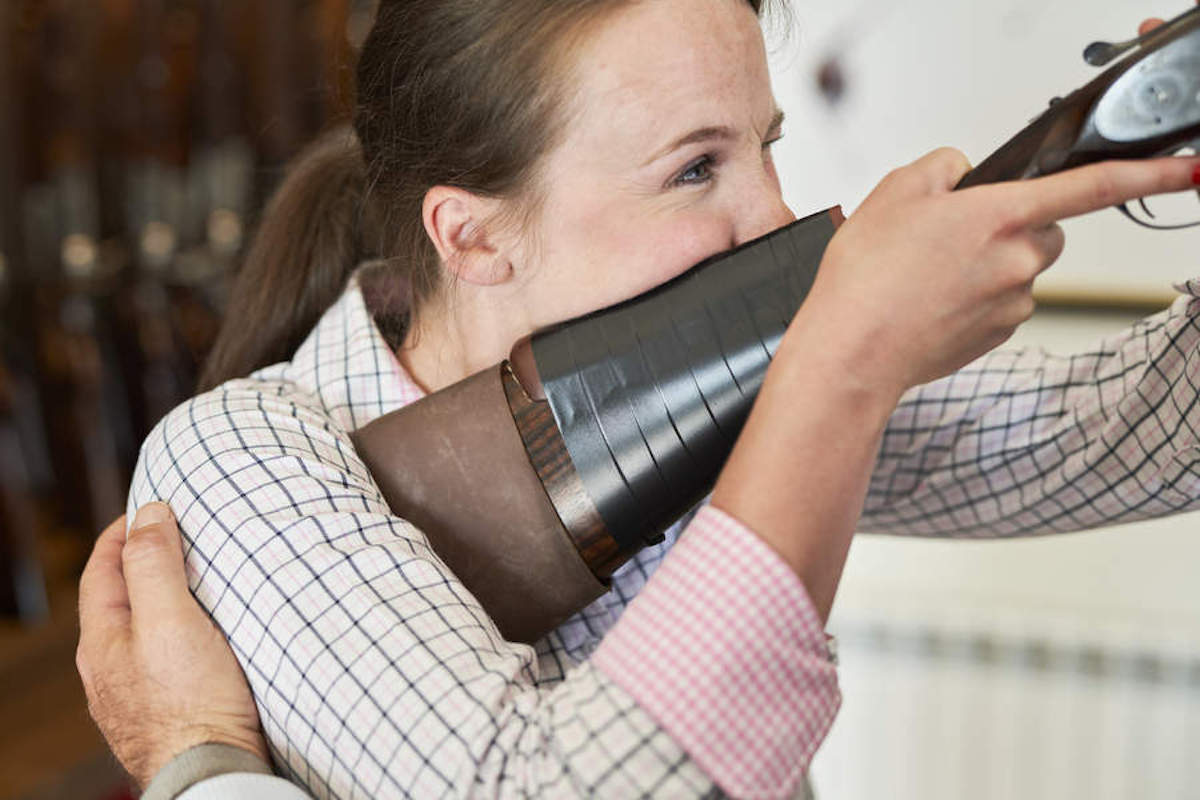How to make sure your game arrives on the plate in perfect condition
Careful handling, correct shot size and good airflow will keep your birds in top condition to the point of consumption, says Liam Bell

Hanging shot birds on a gate or rail for collection is better than putting them in the back of a truck
Keeping game in perfect condition
Game as a meat is no different from any other product — if you want to increase its value and demand for it, it needs to be a quality product to start with. Small, damaged and poorly handled birds — the bane of game dealers’ lives — will never be A-grade no matter what you do with them. Which is why it is important to get things right from the start.
Anyone who has dressed or breasted birds will have noticed differences in the size of the bird and the amount of fat that they carry. Smaller strains of pheasant such as the Kansas and the Manchurian can still be plump and carry enough fat to add flavour. However, bigger strains like the French common and the ubiquitous Bazanty may be on the thin side without an ounce of fat.
To a degree, the condition of the birds will depend upon the year and how they have done since release. If they have struggled and had problems in the release pen; if they were taken off the pellets too soon; or they have been fed poor-quality wheat and pushed about too much on shoot days, they aren’t going to be as well muscled, fit and heavy as they could be. Neither will they carry any body fat.
Heavy birds will still fly, so we shouldn’t get too hung up about birds getting too fat. In my experience that rarely happens, and it is the heavier birds that have the strength to power across the wider valleys and take on those difficult cross-winds.
Smaller birds might suit flatter ground better and be more suited to bursting out of cover crops and producing that initial turn of speed. But regardless of size, both will cook and eat better if they are muscled up and carrying some body fat.
If we assume that the birds are fit, we then need to look at what happens to them between their being shot, and frozen or eaten. Quality control on shoot days is an important first step, and whoever is in charge of the game cart needs to be able to check each and every bird. Anything they deem unfit for human consumption should be put to one side for disposal.

Even a dog with the softest mouth can damage birds
Ripped and torn
Damage to the carcase by dogs is fairly easy to spot. The more obvious signs are ripped and torn flesh, which can happen to those retrieved by the softest-mouthed dogs if the bird has been stuck in a bramble or tucked under tree roots where the dog has struggled to get at it.
The less obvious signs are pushed in ribs. To check the ribs, draw your hand from the front to the back of the bird, following the rib line. On an undamaged bird, the ribs continue to the backbone. On a damaged bird the broken ribs will stop abruptly, and you will be able to feel the sharp, splintered bones.
Some damage by contact with trees is unavoidable, as is occasional bruising to carcases when the birds fall on hard tracks or frozen ground.
Using unnecessarily large shot sizes, overly tight chokes and heavy loads can damage birds as much as any hard-mouthed dog. This is something keepering friends are seeing more of, no doubt due to the current fashion for the above.
Do we need to use 36g loads to shoot pheasants and partridge that are only 25 to 30 yards up? Does using No4 shot really increase our cartridge-to-kill ratios, when some of the country’s best Shots are using 28g to 30g of No6s and still pulling them down? When the perceived advantages of heavier loads and larger shot sizes are weighed up against the increase in carcase damage, I am not sure they are really necessary.
Tips for freezing game
Now that the season has started you’ll hopefully be bringing plenty of game home. Of course you won’t be able…
One pot pheasant recipes
Game cookery recipe: A fantastic game cookery recipe using pheasant and an excuse to raid the freezer!
Assuming a bird is well grown, shot cleanly and retrieved undamaged, the only other thing we really have to worry about that can affect its taste and presentation, between its being killed and being dressed or breasted, is how it is cooled.
A bird can go green in under an hour, which is why cooling should start as soon as it is shot. The carcases need air around them and should not touch anything that could create hotspots, including other birds.
Hanging them on gates or rails for collection is better than hanging them in the back of a truck with no airflow. Laying them on the ground singly, breast up, is better than laying them breast down.

Make sure shot birds are handled carefully so they reach the food chain in good condition
Plenty of space
If you have the luxury of a chiller, get them into it a soon as you can and pre-set the temperature at 2°C. If you use a shed, hang them singly, allowing plenty of space between them so that the air can circulate, and leave the door open. Once they are cooled, you can brace them and hang them together with no ill effects.
It would be wrong of us to pretend that the only reason we go shooting is to put food on the table, when there are so many other reasons why we do it. But at the same time we need to remember that we are producing food, and that it is our duty to reduce waste and to ensure that what we produce is a premium product.
There will never be any demand for damaged and poorly handled birds, and worse still they could put people who have never tried it before off eating game for life.










